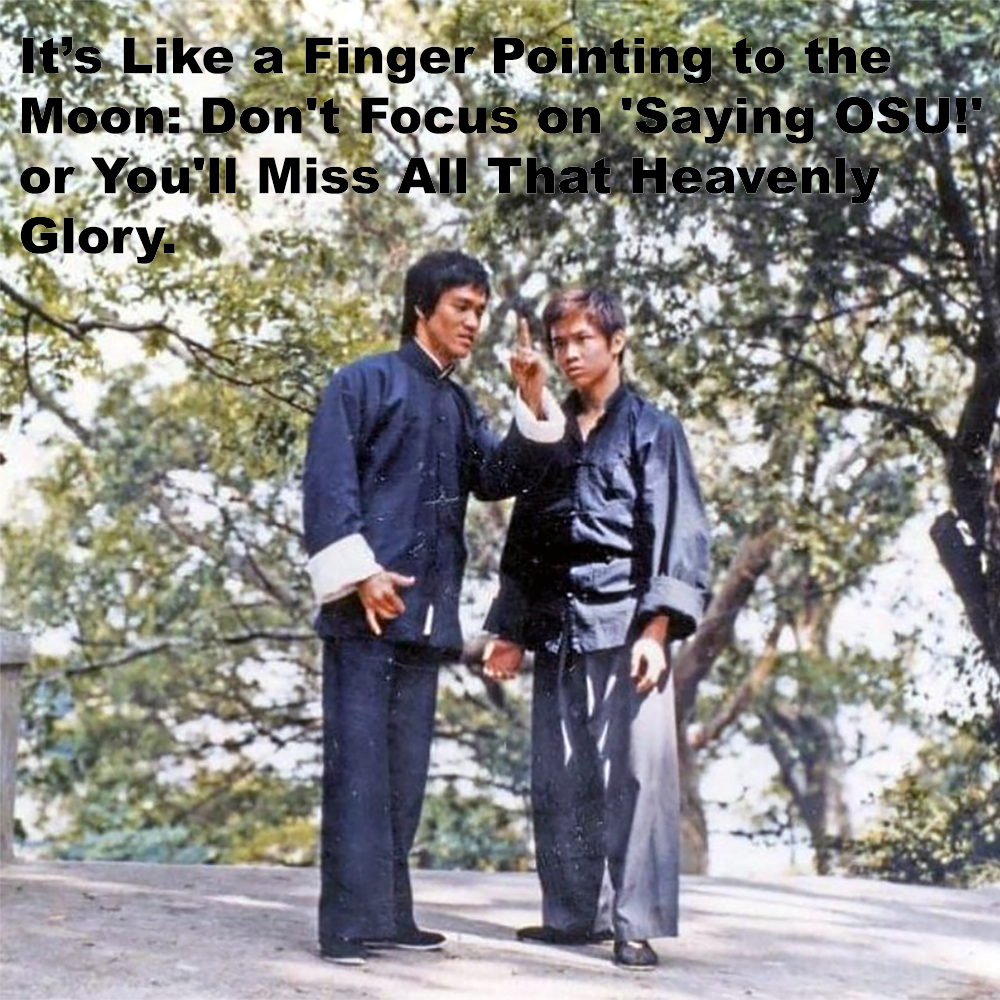
(Approx 2 minute 20 second read)
“Osu”, a term I have written about before, used often by some and bemoaned by others, from beginners to seasoned practitioners. For many, it symbolizes perseverance, respect, or acknowledgment, and it’s often used as a greeting, a response to an instruction, or even as a show of enthusiasm.
.
Let’s start by recognizing its cultural and linguistic roots. Like many terms in the martial arts world, its meaning is deeply connected to Japanese culture. In its traditional context, “Osu” is a contraction of two words: “Oshi” (to push) and “Shinobu” (to endure). Together, they convey the idea of persevering through challenges, embodying the martial artist’s determination to push through hardship.
.
This powerful meaning is why some dojo have integrated the term into their daily practices, especially in styles like Kyokushin, and many Shotokan dojo. In such environments, it becomes a mantra, a verbal representation of the martial artist’s resolve.
.
However, the term has been adopted by people who may not fully understand its cultural and historical significance. What was once a specific term is now frequently used in ways that are at odds with its original intent. This casual and widespread usage has diluted it into a kind of verbal shorthand that is often devoid of meaning.
.
Take, for instance, its use on social media. A single “Osu” comment on a post or comment on my articles, can be perplexing. Is the person greeting me? Agreeing with my point? Acknowledging my work? I also receive it in personal messages, with no other words! What the heck does it mean? The meaning is unclear because the context is missing, and everyone assigns a different interpretation to it.
.
This isn’t just a minor inconvenience; it speaks to a broader issue about clarity in communication.
.
Also, “Osu” doesn’t belong in every dojo (it’s not used in mine), or martial tradition. Its origins are rooted in Japanese martial culture, and militaristic roots. But not all karate styles have adopted this term. In fact, Okinawan styles, which are the foundation of traditional karate, do not use it at all.
.
The Okinawan approach to martial arts often emphasizes a quieter, more subtle form of communication. Using “Osu” in such settings is out of place, like trying to fit a puzzle piece where it doesn’t belong.
.
The broader question we need to ask ourselves is this: are we using the term because we understand and respect its meaning, or simply because we’ve heard others use it? It’s easy to pick up terms and phrases without fully appreciating their context.
.
This isn’t to say that using “Osu” is inherently wrong. In the right context, it can be a powerful affirmation of respect, discipline, and perseverance. But when we overuse it, or use it in the wrong context, we risk turning it into a cliché.
.
Language matters, especially in the martial arts, where every word and gesture has layers of meaning built up over years of practice.
.
Clarity in communication is key isn’t it? Instead of relying on it as a catch-all term, take a moment to think about what you’re trying to say. Is it a greeting? Acknowledgment? Gratitude? Or do you have something important to say?
.
There are many ways to convey these sentiments without defaulting to a word that may be misinterpreted or misunderstood, especially so when many people don’t even spell the word correctly.
.
.
Written by Adam Carter – Shuri Dojo.
.
.
Photo Credit: Bruce Lee from the movie ‘Enter the Dragon’.
